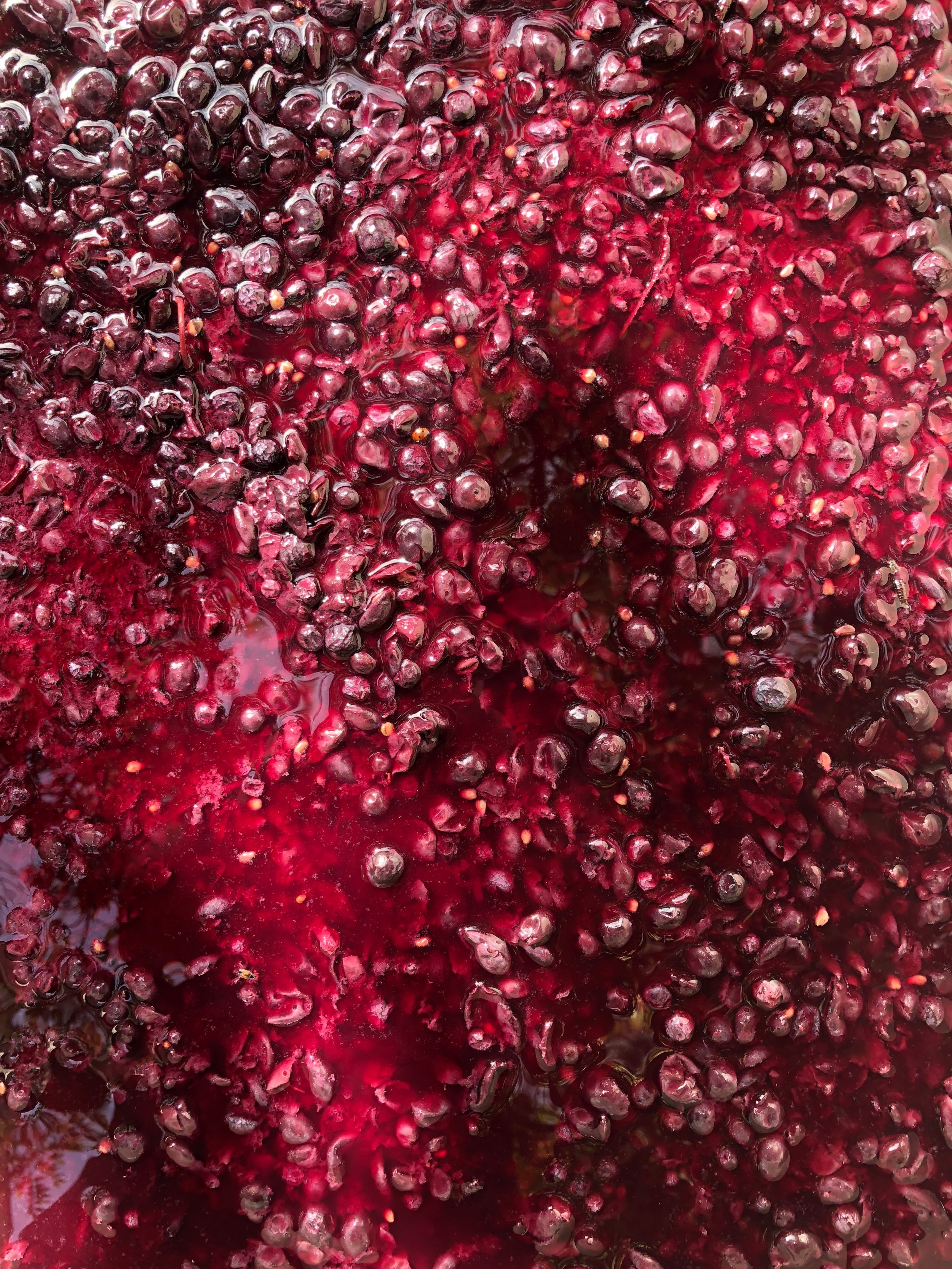
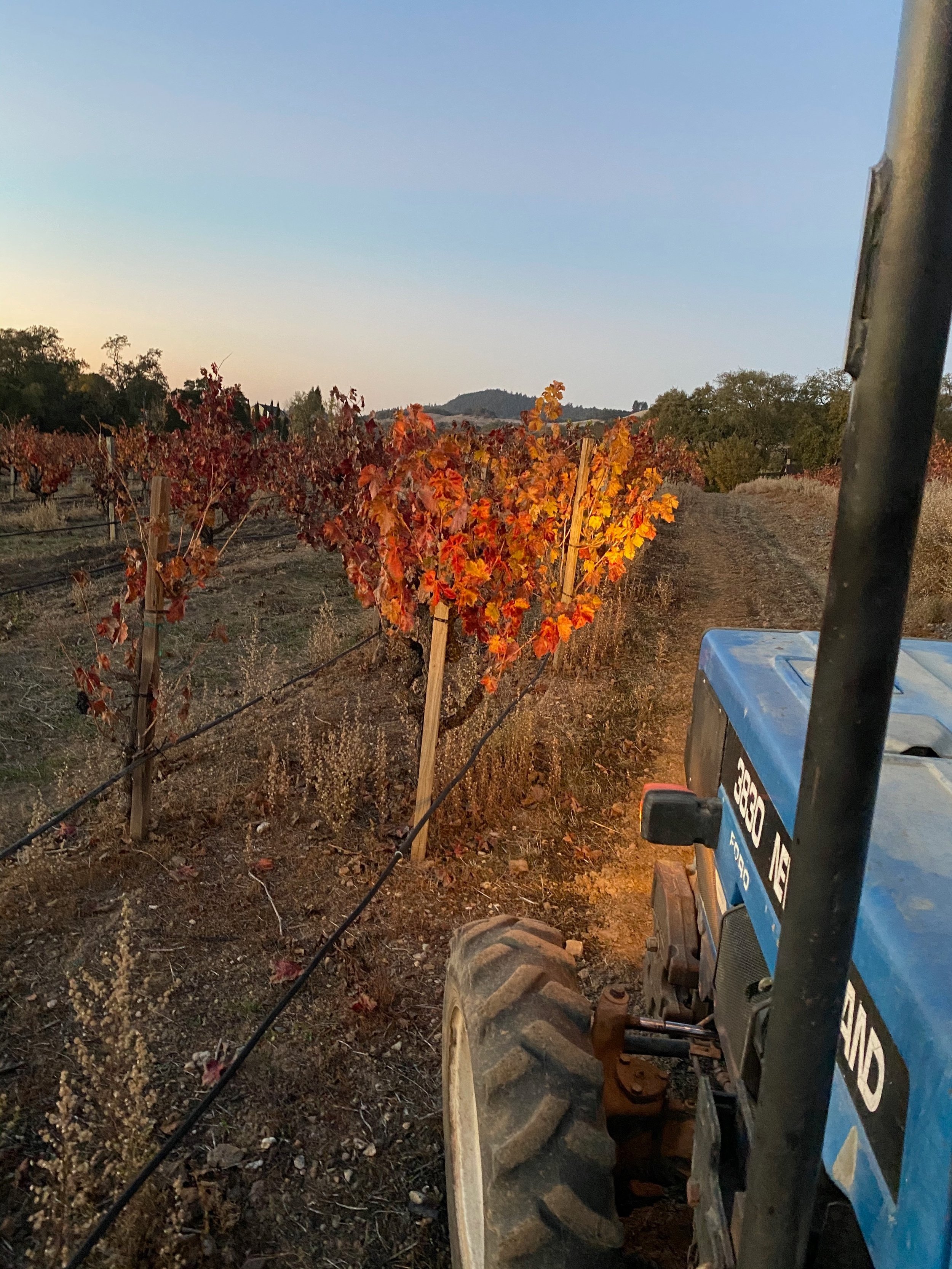
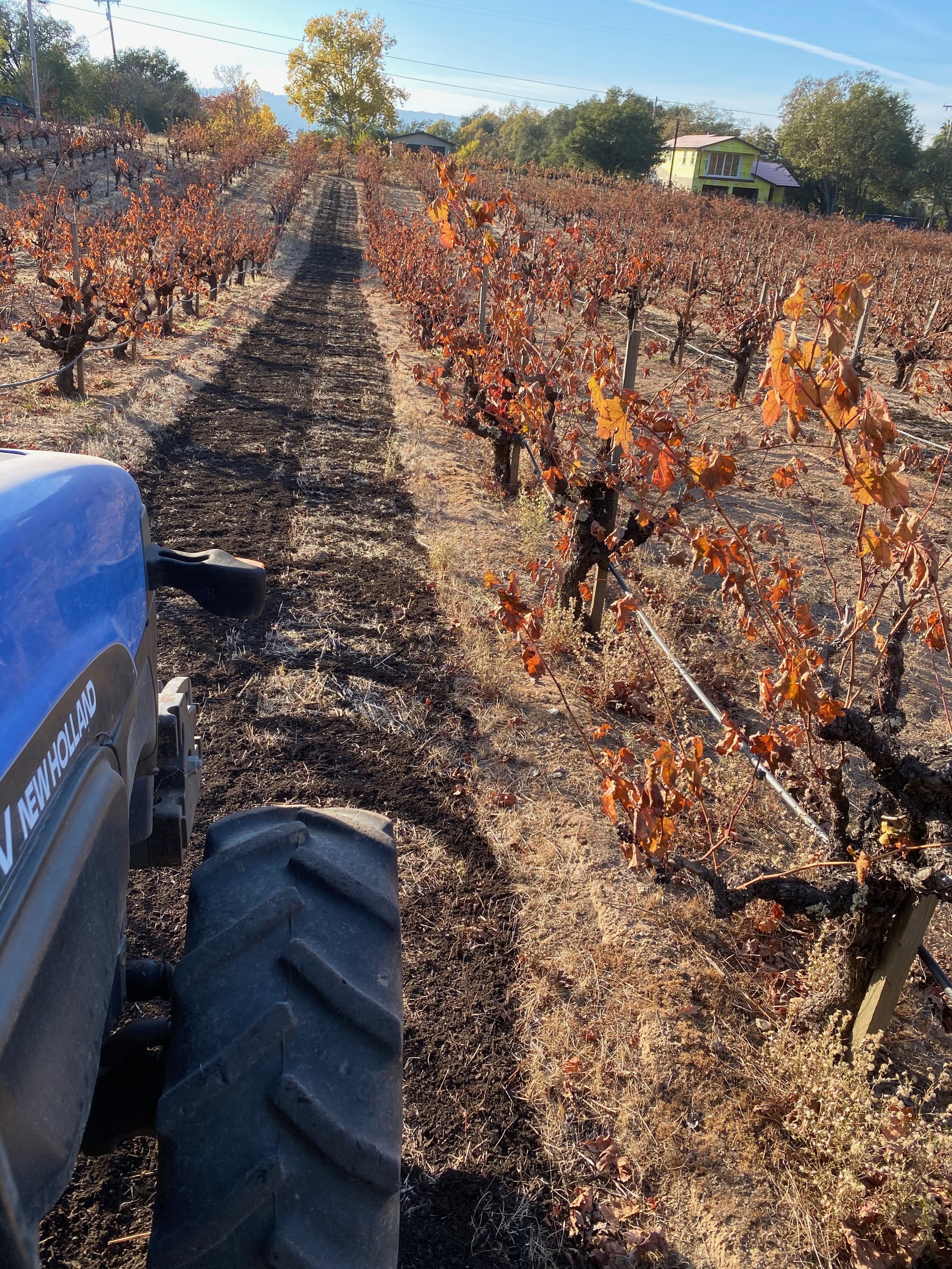
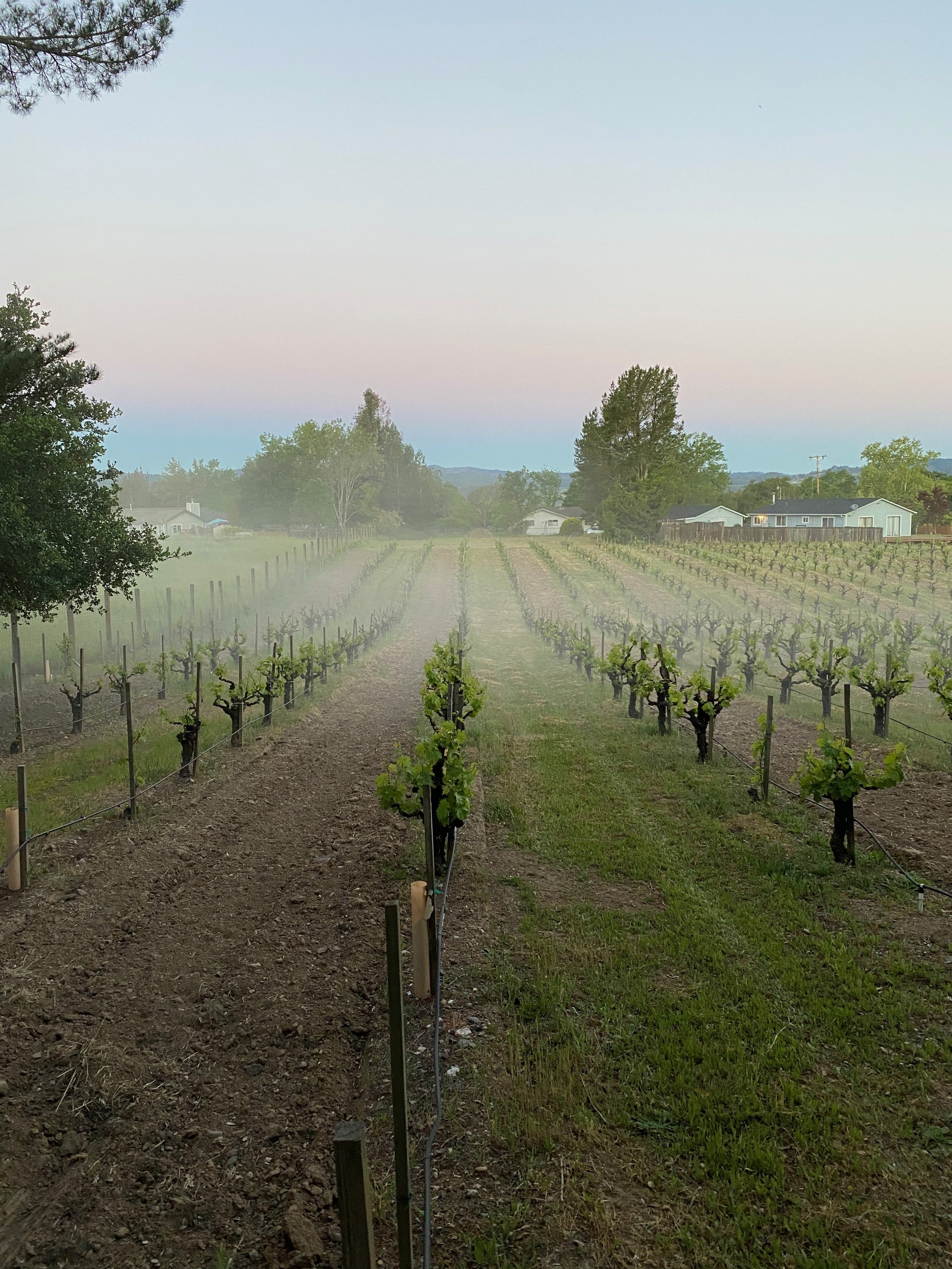
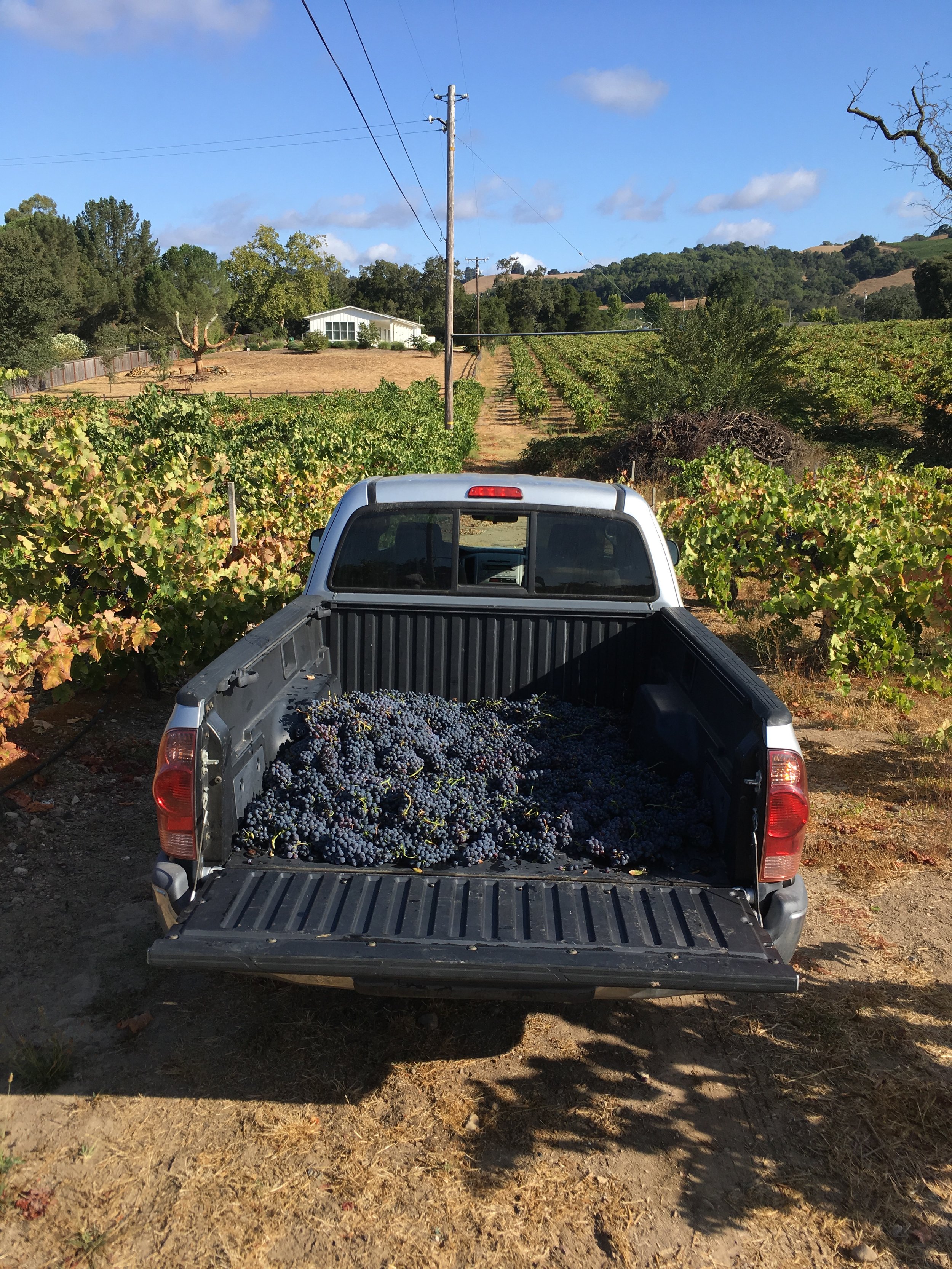
Zinfandel 2021
Zinfandel is to Sonoma County what hot dogs are to NYC - a core tenet of the culture, woven into the fabric of everyday life. Thing is, while I respect the grape, and the burly old vines from which it grows, the wines it produces rarely excite me. They tend to be colossal wines, loaded with fruit, spice, and high alcohol which accentuates the fruit and spice even further. It's quite the ride if you're built for it, but like most winemakers, I like producing wines that I like to drink. So in 2021, I challenged myself to do just that: to produce a Zinfandel that was quieter, but still itself (as in, spicy, with lots of berry fruits, etc.). I knew it would be a challenge, like someone asking me to talk less, but still be myself. I was heading into uncharted waters, but in the end, I believe we succeeded. The details are below, and in the end we have just 36 cases of the stuff, but if you love a wine that can give it up on the first date but still stay classy, this will not disappoint.
The Grape
Zinfandel, long considered exclusive (and native) to California, is now known to be from Croatia, where it is called Crljenak Kaštelanski. Theories abound on how it came to be exported to the Golden State, but it was most likely in the early 19th century, when it proved to be well suited to the hot and dry climates found up and down the state. Italy, too, grows Zinfandel, most of it in Puglia, where it is known as Primitivo. Whatever you call it, there is nothing quite like it. It has medium-sized berries, with thin skins prone to dessication in late summer, thereby creating raisins which increase the grape's sugar content (and thus its potential alcohol). The bunches are tightly formed, with the berries pressed into one another, making rot and mildew persistent concerns. Moreover, the size of both the bunches and berries is highly variable, with uneven ripening throughout the vineyard. But if you can thread the needle, and harvest at the right time, you will be rewarded with a wine that is gutsy, giving, and in no way shy.
The Source
We grow the Zinfandel here, where we live, on the Collins Vineyard. For all the geeky details, please click here.
The Winemaking
In the spirit of experimentation (we are a workshop, after all), we picked 1/2 ton in late August, another 1/2 ton eight days later, and finally, another 1/2 ton a week after that. Each was fermented on its own, via native yeast, with all fruit being destemmed and crushed. The resulting three wines all showed the raspberry and candied cherry flavors traditionally found on this ranch. Otherwise, the textures and tannins varied greatly, sometimes in unexpected ways. In the end, we made about 205 gallons of wine, 85 of which made the final cut into this bottling. The wine was barreled down in October 2021, where it sat quietly for 34 months in neutral oak. In August 2024 we added a small dose of SO2 to keep it safe and into the bottle it went.
How's it taste?
Despite the 14.9% alcohol, the wine is light on its feet. There is a freshness throughout, one that is often absent in other Zinfandels, but the grape's trademark flavors of cherry liqueur, raspberries, and pomegranate are unmistakeable. The tannins are present, but softened after 34 months in neutral oak barrels, leaving the wine with no sharp edges. Of the four wines on offer here, this one is probably the most sprightly, and in the best mood.
How to drink and enjoy
These wines were bottled in late August, and could use another month or two to find their feet. Wines also don't like being shipped, and are usually much better if given a week or so to settle down.
But who has such patience? I know I don't, so here's the fix: Open it the night before (or morning of), pour a couple ounces out, replace the cork, shake it up good, and let it sit until you're ready to consume. Oh, and serve around 60 degrees if possible. Your efforts (and patience) will be rewarded.
Details
Appellation: Russian River Valley
Vineyard: Collins Vineyard, planted 1934
Aging: 34 months in neutral French oak
Production: 36 cases
Specs: Alcohol: 14.9% | Titratable Acidity: 6.22 g/L | pH: 3.62 | Volatile Acidity: 0.79 g/L
Zinfandel is to Sonoma County what hot dogs are to NYC - a core tenet of the culture, woven into the fabric of everyday life. Thing is, while I respect the grape, and the burly old vines from which it grows, the wines it produces rarely excite me. They tend to be colossal wines, loaded with fruit, spice, and high alcohol which accentuates the fruit and spice even further. It's quite the ride if you're built for it, but like most winemakers, I like producing wines that I like to drink. So in 2021, I challenged myself to do just that: to produce a Zinfandel that was quieter, but still itself (as in, spicy, with lots of berry fruits, etc.). I knew it would be a challenge, like someone asking me to talk less, but still be myself. I was heading into uncharted waters, but in the end, I believe we succeeded. The details are below, and in the end we have just 36 cases of the stuff, but if you love a wine that can give it up on the first date but still stay classy, this will not disappoint.
The Grape
Zinfandel, long considered exclusive (and native) to California, is now known to be from Croatia, where it is called Crljenak Kaštelanski. Theories abound on how it came to be exported to the Golden State, but it was most likely in the early 19th century, when it proved to be well suited to the hot and dry climates found up and down the state. Italy, too, grows Zinfandel, most of it in Puglia, where it is known as Primitivo. Whatever you call it, there is nothing quite like it. It has medium-sized berries, with thin skins prone to dessication in late summer, thereby creating raisins which increase the grape's sugar content (and thus its potential alcohol). The bunches are tightly formed, with the berries pressed into one another, making rot and mildew persistent concerns. Moreover, the size of both the bunches and berries is highly variable, with uneven ripening throughout the vineyard. But if you can thread the needle, and harvest at the right time, you will be rewarded with a wine that is gutsy, giving, and in no way shy.
The Source
We grow the Zinfandel here, where we live, on the Collins Vineyard. For all the geeky details, please click here.
The Winemaking
In the spirit of experimentation (we are a workshop, after all), we picked 1/2 ton in late August, another 1/2 ton eight days later, and finally, another 1/2 ton a week after that. Each was fermented on its own, via native yeast, with all fruit being destemmed and crushed. The resulting three wines all showed the raspberry and candied cherry flavors traditionally found on this ranch. Otherwise, the textures and tannins varied greatly, sometimes in unexpected ways. In the end, we made about 205 gallons of wine, 85 of which made the final cut into this bottling. The wine was barreled down in October 2021, where it sat quietly for 34 months in neutral oak. In August 2024 we added a small dose of SO2 to keep it safe and into the bottle it went.
How's it taste?
Despite the 14.9% alcohol, the wine is light on its feet. There is a freshness throughout, one that is often absent in other Zinfandels, but the grape's trademark flavors of cherry liqueur, raspberries, and pomegranate are unmistakeable. The tannins are present, but softened after 34 months in neutral oak barrels, leaving the wine with no sharp edges. Of the four wines on offer here, this one is probably the most sprightly, and in the best mood.
How to drink and enjoy
These wines were bottled in late August, and could use another month or two to find their feet. Wines also don't like being shipped, and are usually much better if given a week or so to settle down.
But who has such patience? I know I don't, so here's the fix: Open it the night before (or morning of), pour a couple ounces out, replace the cork, shake it up good, and let it sit until you're ready to consume. Oh, and serve around 60 degrees if possible. Your efforts (and patience) will be rewarded.
Details
Appellation: Russian River Valley
Vineyard: Collins Vineyard, planted 1934
Aging: 34 months in neutral French oak
Production: 36 cases
Specs: Alcohol: 14.9% | Titratable Acidity: 6.22 g/L | pH: 3.62 | Volatile Acidity: 0.79 g/L
